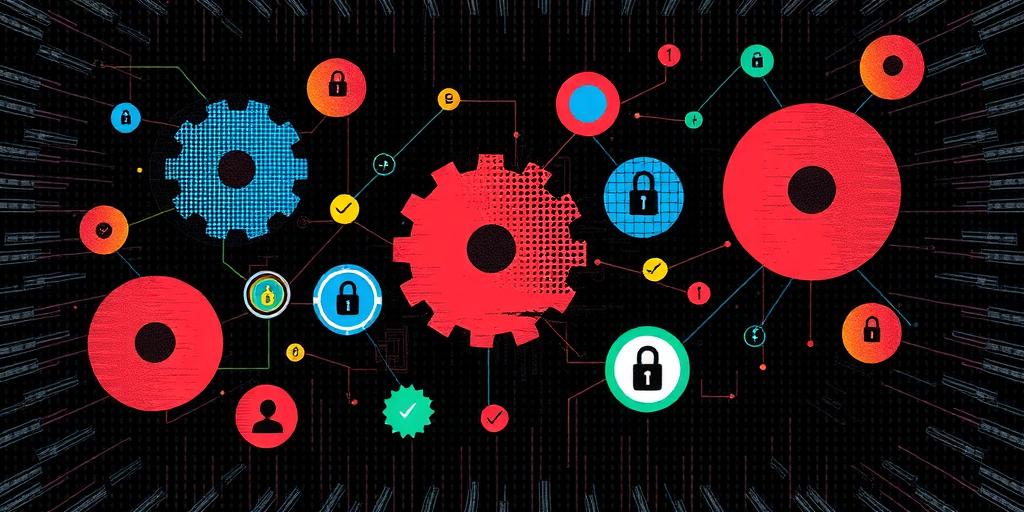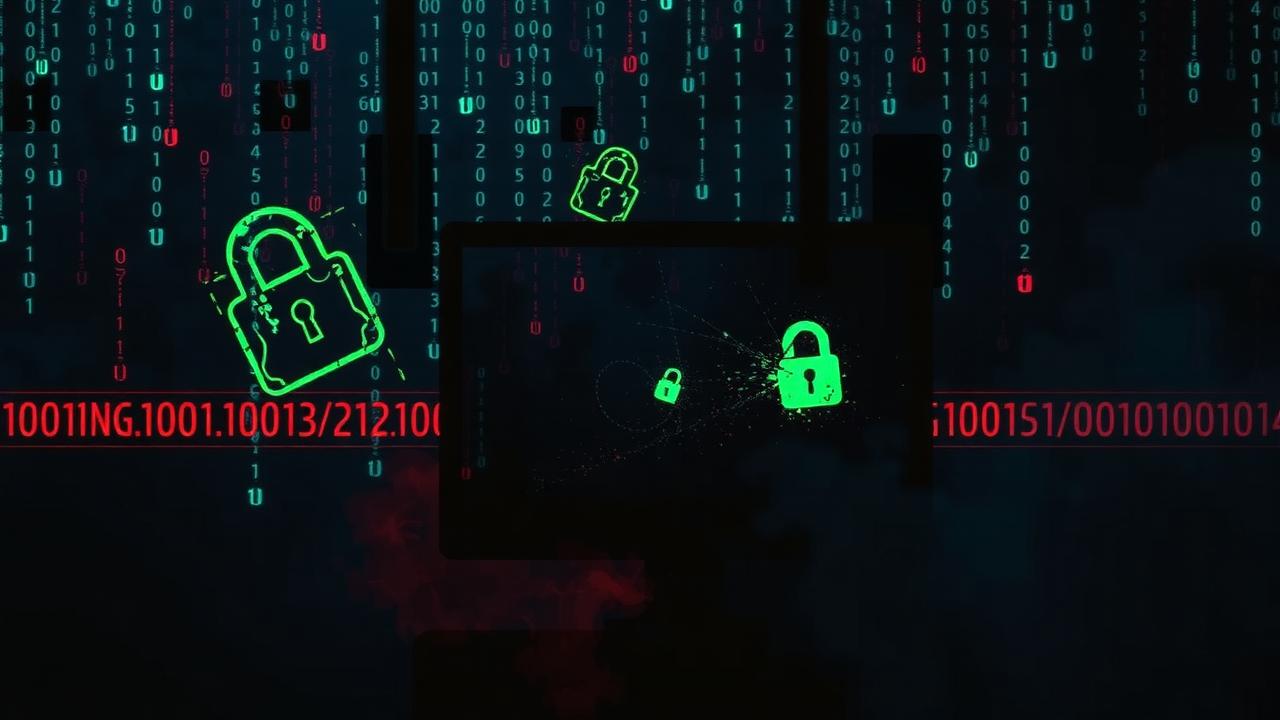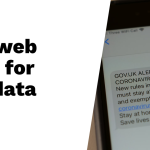The 2025 Dark Web Data Breach stands as a significant threat, exposing around 16 billion unique login records from platforms like Apple, Google, and Facebook. This breach has combined different types of sensitive data, including personal identifiable information (PII), financial details, and health records. The risks are serious; credential stuffing can lead to unauthorized access across multiple accounts. Moreover, cybercriminals can exploit this wealth of data for phishing scams or identity theft. To protect against these dangers, individuals should promptly change passwords and enable multifactor authentication. Businesses need solid password policies and regular employee training to minimize vulnerabilities in their systems.
Table of Contents
- Overview of the 2025 Dark Web Data Breach
- Types of Data Compromised in the Breach
- Risks Associated with the Data Breach
- Immediate Actions for Individuals to Take
- Recommended Response for Businesses
- Preventative Measures to Implement
- Long-Term Strategies for Cybersecurity Awareness
- Frequently Asked Questions
- TL;DR
Overview of the 2025 Dark Web Data Breach

The 2025 Dark Web Data Breach stands out as one of the largest breaches recorded, impacting over 500 million users worldwide. This incident is alarming as it reveals sensitive data across multiple platforms, including major players like Apple, Google, and Facebook. Data from this breach surfaced on various dark web forums, indicating a well-orchestrated effort by cybercriminals to compile and exploit login credentials from different sources. Experts believe this breach may be the result of aggregating several smaller breaches, highlighting the interconnectivity of online services. As one compromised site can lead to vulnerabilities in others, the implications are far-reaching. Moreover, the breach showcases the growing sophistication of hackers, who are constantly evolving their tactics to evade detection. Many users remain unaware of the breach, pointing to a significant gap in public knowledge about data security. The fallout from the breach has prompted increased scrutiny from regulators and lawmakers, pressuring organizations to bolster their cybersecurity measures. Media coverage has intensified, raising public concern over online safety and data privacy, while cybersecurity firms are investigating the breach to improve defenses against future attacks.
Types of Data Compromised in the Breach
The 2025 Dark Web Data Breach exposed a wide range of sensitive information. Among the most critical data compromised were usernames and passwords for online accounts, which puts users at serious risk of unauthorized access. This breach also included email addresses linked to those accounts, increasing the potential for spamming and phishing attacks that could lead to further breaches.
Payment information, such as credit card numbers, poses a direct threat of financial fraud and theft. In addition, sensitive health information can result in medical identity theft, which is especially damaging for victims. Corporate data, including proprietary business information, could be sold to competitors or exploited for corporate espionage. Furthermore, the exposure of geolocation data threatens personal safety and privacy, as it can reveal individuals’ whereabouts.
Social media accounts are also at risk of being hijacked, leading to reputational damage for both individuals and brands. The breach includes historical login data, which can be used for targeted attacks based on user behavior patterns. The long-term exposure of various data types increases the risk of future breaches, as criminals can continue to leverage old data for new scams. Finally, the combination of different data types enhances the effectiveness of social engineering tactics used by cybercriminals, making it crucial for individuals and businesses to understand the full scope of the compromised data.
| Type of Data | Description |
|---|---|
| Personal Identifiable Information (PII) | Names, addresses, Social Security numbers. |
| Financial Information | Credit card details, banking information. |
| Health Records | Medical histories, insurance information. |
| Corporate Information | Trade secrets, customer data. |
| Login Credentials | Emails and passwords that can facilitate further breaches. |
Risks Associated with the Data Breach

Identity theft is one of the most pressing concerns following the 2025 Dark Web Data Breach. Criminals can easily use stolen data to impersonate victims, leading to significant financial losses. With sensitive information such as credit card and banking details compromised, the risk of financial fraud increases dramatically. Unauthorized transactions could drain accounts before victims even realize what has happened. Additionally, the breach enables cybercriminals to craft convincing phishing emails by leveraging personal details, making it easier to trick individuals into revealing even more sensitive information.
Compromised data is often sold on dark web marketplaces, perpetuating the cycle of crime. The more this data spreads, the higher the risk for everyone involved, as it can be used for further attacks. Moreover, a data breach can severely damage user trust in online services, leading to decreased engagement and tarnished business reputations. Businesses may also face legal ramifications, including hefty fines and lawsuits, as data protection laws become stricter.
Users affected by the breach might find their email addresses circulating among criminals, resulting in an increase in spam and unwanted communications. Targeted attacks become more feasible when attackers can utilize personal information to manipulate and deceive individuals. The risk of account takeovers rises, especially for those who use weak or reused passwords, making it crucial for everyone to adopt stronger security practices. Lastly, the emotional toll on victims can be significant, causing anxiety and distress over the potential misuse of their personal information.
Immediate Actions for Individuals to Take
In the wake of the 2025 Dark Web Data Breach, it’s crucial for individuals to act quickly to protect themselves. Start by changing your passwords for all online accounts, focusing particularly on those linked to financial or sensitive information. This simple step can make a significant difference in securing your data. Next, review your bank and credit card statements for any unauthorized transactions. Spotting issues early can help you tackle fraud before it escalates.
Consider placing a fraud alert on your credit reports. This action can serve as a warning signal for lenders that they should take extra steps to verify your identity before granting credit. Be vigilant about unexpected messages or emails asking for personal information, as they could be phishing attempts designed to steal your credentials.
Regularly check your online accounts for any unusual activity that could indicate unauthorized access. If you notice anything suspicious, take immediate action. To minimize risks, use unique passwords for each account, which can prevent a single compromised account from leading to more significant issues. Update your security questions and recovery options periodically to strengthen your account security.
In addition, consider freezing your credit to prevent new accounts from being opened in your name without your consent. Inform your close contacts about the breach, as they may also be at risk and need to take preventive measures. Finally, stay informed about the latest security threats and best practices to protect your personal information.
- Change passwords for all online accounts, especially those linked to financial or sensitive information.
- Review bank and credit card statements for unauthorized transactions to catch fraud early.
- Consider placing a fraud alert on credit reports to protect against identity theft.
- Be cautious of unexpected messages or emails requesting personal information, as they may be phishing attempts.
- Check online accounts for any unusual activity that could indicate unauthorized access.
- Use unique passwords for each account to minimize risk if one account is compromised.
- Regularly update security questions and recovery options to enhance account security.
- Consider freezing credit to prevent new accounts from being opened in your name without consent.
- Inform close contacts about the breach, as they may also be at risk and need to take preventive measures.
- Stay informed about the latest security threats and best practices for protecting personal information.
Recommended Response for Businesses
To effectively respond to the breach, businesses should first conduct an immediate assessment to determine the scope and impact of the incident, including the types of data affected. Prompt notification to affected customers is crucial, as it allows them to take protective measures. Enhancing security protocols is essential, especially in areas identified as vulnerable during the breach.
Establish a dedicated response team to manage breach-related communications and actions, ensuring that all stakeholders are informed. It’s also wise to engage cybersecurity experts to assist in assessing risks and vulnerabilities, as their expertise can provide valuable insights.
Regular training sessions on data security practices for all employees should be implemented, reinforcing the importance of personal responsibility in safeguarding sensitive information. Additionally, businesses need to review and update their incident response plans based on lessons learned from the breach, ensuring they are better prepared for future incidents.
Transparent communication with stakeholders about the steps being taken to address the breach and prevent future occurrences is vital. Collaboration with law enforcement can aid in investigating the breach and identifying perpetrators, while evaluating insurance policies on data breaches can help businesses understand coverage options and support available to them.
Preventative Measures to Implement
To safeguard against future data breaches, implementing strong preventative measures is crucial. Start with strong password policies that enforce the use of complex passwords and require regular updates. This simple step can significantly reduce the risk of unauthorized access. Additionally, adopting multi-factor authentication (MFA) across all accounts adds an extra layer of protection, making it harder for cybercriminals to breach accounts even if they have the password.
Backing up important data regularly is another essential measure. In the event of a breach, having backups allows for quick recovery, minimizing disruptions. Investing in cybersecurity tools that monitor for unusual activities is vital as well, providing early warnings of potential threats.
Conducting periodic security audits helps identify vulnerabilities within your systems, allowing for timely rectifications. Employee education is equally important; training staff on cybersecurity best practices and safe online behavior can prevent many breaches caused by human error. Furthermore, limiting access to sensitive data based on employee roles ensures that only those who need the information can access it, reducing the risk of insider threats.
Establishing a clear incident response plan is critical. This plan should outline how to respond in the event of a breach, ensuring everyone knows their role during such an incident. Staying updated on the latest cybersecurity trends and collaborating with other organizations can also enhance your overall security strategy, as sharing insights can lead to more robust defenses.
Long-Term Strategies for Cybersecurity Awareness
Building a culture of cybersecurity within your organization is crucial. This means making cybersecurity a shared responsibility among all employees. To do this, conduct regular training sessions and workshops that keep everyone updated on the latest threats and best practices. For example, you could offer a monthly workshop that highlights new phishing tactics or the importance of using strong passwords.
Incentivizing proactive behavior can also make a difference. Consider implementing a reward system for employees who identify potential security threats or breaches. Recognition can encourage others to stay alert and engaged. Furthermore, using newsletters or bulletins can help keep cybersecurity at the forefront of employees’ minds, providing tips and updates on recent incidents.
Creating an environment of open communication is essential. Employees should feel safe reporting concerns without fear of repercussions. Regular discussions about cybersecurity in team meetings can reinforce its importance and keep the topic alive. Tailoring training programs to specific departments can also enhance relevance and effectiveness, as different teams may face unique challenges.
Encouraging secure communication channels for sharing sensitive information is another vital step. For instance, using encrypted messaging apps for internal communications can significantly reduce the risk of data leaks. Regularly evaluating the effectiveness of your training programs and adjusting content based on employee feedback ensures that your approach remains effective and relevant.
Finally, engaging in community awareness programs can help promote good cybersecurity practices beyond the organization. By participating in local initiatives, you can not only raise awareness but also build a network of support that extends your cybersecurity efforts.
Frequently Asked Questions
1. What is the dark web and why should I care about it?
The dark web is a part of the internet that isn’t indexed by search engines. It’s often linked to illegal activities, like selling stolen data. Knowing about it is important because if your information ends up there, it could lead to identity theft or fraud.
2. How do data breaches occur on the dark web?
Data breaches happen when hackers steal personal information from websites or companies. They then sell this stolen data on the dark web, putting your information at risk.
3. What are the signs that my information may have been compromised?
Signs include unusual activity on your accounts, like unexpected charges or login attempts. If you receive alerts about data breaches from a service you use, it’s also a strong indicator that your information might be in danger.
4. How can I protect myself from data breaches and the dark web?
You can protect yourself by using strong, unique passwords, enabling two-factor authentication, and regularly monitoring your accounts. It’s also wise to use identity theft protection services for an extra layer of security.
5. What should I do if I find my data on the dark web?
If you discover your information on the dark web, act quickly. Change passwords, notify your bank, and consider freezing your credit. You may also want to sign up for identity theft protection to help monitor further risks.
TL;DR The 2025 Dark Web Data Breach exposed 16 billion login records from platforms like Apple and Google, raising serious security concerns. Compromised data includes personal information, financial details, and health records. Individuals should change passwords, enable multifactor authentication, and monitor their information. Businesses must enforce strong password policies, conduct regular security audits, and train employees on phishing risks. Overall, both individuals and organizations need to adopt proactive cybersecurity strategies to reduce risks associated with data breaches.





